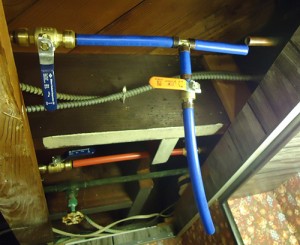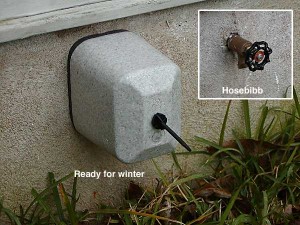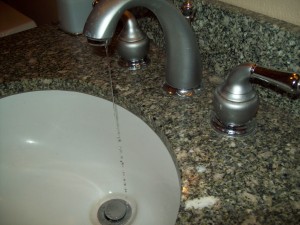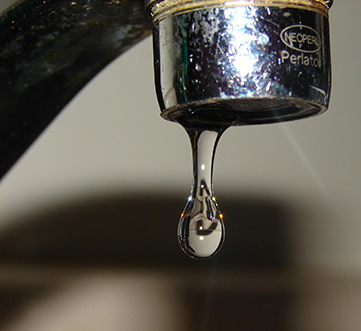PEX Tubing vs. Copper Piping: Pro’s and Con’s
Even if you are far from being a plumbing expert, there are some plumbing basics that can help you select the best type of piping for your home. There are a couple of choices available, and there are some significant differences between them. The two choices most commonly seen in plumbing today are PEX tubing and Copper piping. Each has pros and cons, so it all comes down to personal choice. To help in your decision making process, the advantages and drawbacks of each are listed below.
PEX Tubing: Benefits and Drawbacks
PEX tubing has some major advantages. PEX is often much less expensive then copper tubing, and due to this it is growing in popularity. PEX can easily be used in nearly any plumbing system, and it can be combined with both metal and PVC. Since PEX is highly flexible, it can be installed very quickly and uses less fittings.
PEX tubing cannot be exposed to UV lighting.
Copper Piping: Benefits and Drawbacks
Copper Piping is a more expensive plumbing choice and has been around the longest. Copper can be recycled, unlike PEX. Copper can also be used both inside and outdoors.
Copper’s expense is one of the big drawbacks, since it can be twice as costly as PEX. Another drawback is that copper plumbing can sometimes give a metallic twang to water. Freezing weather is the enemy of copper piping, because it can freeze and break, so longevity is not always guaranteed.
Both PEX and Copper have some important advantages, so it is best to give careful consideration to each before choosing the right one for your home. Your plumbing is something you will be using for many years, possibly a lifetime, so take your time making your selection.
Home Plumbing Tips: Fixing A Clogged Drain
One of the most frustrating things in the world for homeowners seems like a little thing on the surface. Plumbing problems happen now and then, and when they do it can cause some real headaches. Whether we are talking about a clogged drain in your home or a leaky faucet, these are things that cause your water bill to rise and your blood pressure to skyrocket.
So what should you do when these things happen?
If you are not a plumber, then perhaps you will want to know some plumbing repair tips for your home.
Doing these things will help keep your home running more smoothly, and it will help to ease some of the headaches that are bound to come about. Read the rest of this entry »
Pex vs. Copper & CPVC Piping – Which Is Best?
While technicians at White Knight Plumbing can do repairs to any type of existing plumbing system, we use Pex piping and fittings to do most repairs and in all of our new construction projects.

Here is why we use Pex Piping:
It is clean!
Unlike metal piping pex is immune to corrosion and mineral build-up, also, it uses no glue’s, solders or solvents to assemble which keeps potentially dangerous chemicals out of plumbing systems.
It is efficient!
Pex plumbing systems retain more heat in hot water lines and resist condensation on cold water lines. It will not burst in freezing conditions like metal piping will, which causes costly repairs. It is not affected by electrolysis which can cause small pin hole leaks in copper piping.
It is quiet and reliable!
Pex piping dampens rushing water noise making a quieter plumbing system so no more pipes that sing, whistle or make clunking noises in the wall or under the floor.
It is proven and guaranteed!
Pex piping has been around for more than 35 years with over 12 billion feet of tubing installed worldwide and is backed by a 25 year warranty when installed by a trained professional. Read the rest of this entry »
Winterizing Your Plumbing System
It’s getting colder and with that cold comes the hassle of frozen / broken pipes, if you don’t take a few precautions. Here are a few winterizing tips that just might keep me from having to make a service call to your house.
Winterizing Hose Bibs
#1 Disconnect all hoses from your hose bibs!
Most hose bibs installed these days are frost free which shuts the water off inside the wall away from the outside cold but, if you do not disconnect the hose the water stays trapped in the spout.
When the water freezes it expands and will damage the hose bib.
This problem is usually discovered in the spring or summer when you turn on the bib for the first time and find water is coming out of your wall.
Doing this will save you a costly repair!!
#2 Hose bib covers..
You can get these at any of your local home improvement stores.
They are foam, dome shaped covers you put over your hose bib.
These covers help keep the cold away from the hose bib.
Hose bib covers are more important for non-frost free hose bibs but it wouldn’t hurt to put them an all of your outdoor faucets.
Putting these on will also help to remind you to disconnect your hoses.
These covers cost about 1-2 dollars and are a wise investment.

Tips To Help Prevent Frozen Pipes
Over the past few months I have received literally 100’s of phone calls from people with frozen pipes and burst pipes, most have asked “What can I do to get my pipes to thaw out and what can I do to keep this from happening again?” I have given them all the same advice. Most of the advice I have already posted here on my website under the heading “Winterizing”. Here are some additional tips in order to keep these problems from happening again
How to prevent frozen pipes when temperature is going to drop below 32 degrees:
#1 Trickle water from a sink or two to keep water moving in your plumbing system, moving water takes longer to freeze than water that is not moving, this will help keep pipes from freezing.

Leaking Faucets & Toilets
Dripping faucets are more than annoying…they are also expensive. It is estimated that a faucet that is dripping 30 drips per minute will waste 1041 gallons per year. Even small leaks can waste a significant amounts of water. If your leak is on the hot side of your faucet it is not only a waste of water but also the energy used to heat the water.

Leaks inside the toilet can waste up to 200+ gallons of water a day. Toilet leaks can be detected by adding a few drops of food coloring or a leak detector tablet into the water in the toilet tank. If the colored water appears in the bowl, the toilet is leaking.
If you have leaking faucets or toilet, stop pouring money down the drain and call White Knight Plumbing today. We will send out a licensed technician to trouble shoot and repair your problem
Tankless Water Heater: Why You Should Consider One
Did you know that you can save a lot of money if you switch to a tankless water heater?
A tankless water heater is more energy efficient than most of the conventional water heaters on the market. Read on to learn more specifics as to how tankless water heaters can work more efficiently for you, as well as learn how they can save you a considerable amount of money.
Unlike conventional tank water heaters that have to continually heat up the water stored in its tank, a tankless water heater heats up water as it goes through the unit and only when it is necessary to do so.
Have you ever had to wait for the water to heat up after someone else in the house has taken a hot shower?
This is because the water heater must work to heat up more water so it becomes available again – otherwise, the “hot” water will come out cold.
You may also encounter this if you take a shower too early after doing laundry and dishes the water will become more cool as the hot water runs out.
With a tankless water heater, these inconveniences are a thing of the past. Read the rest of this entry »